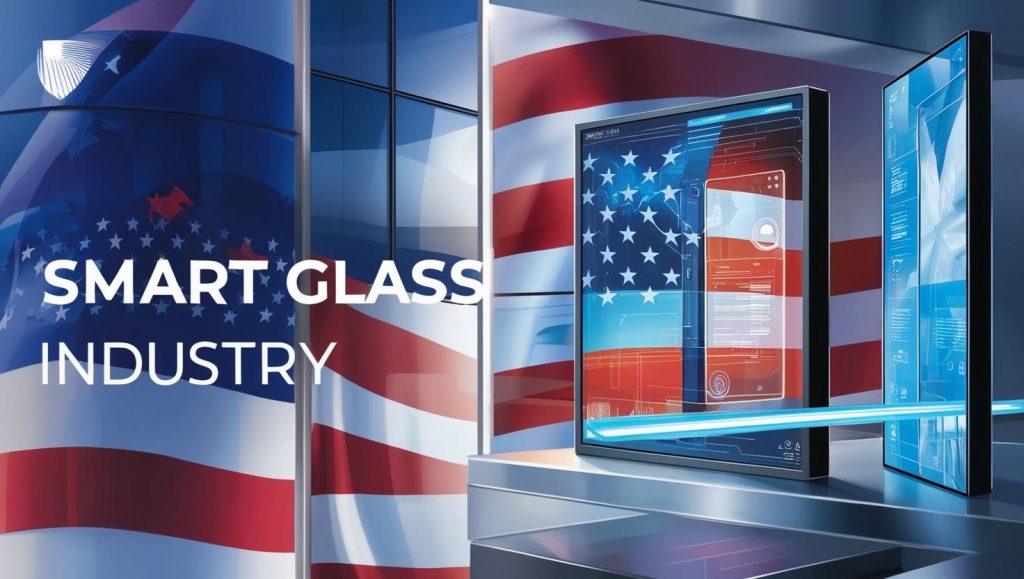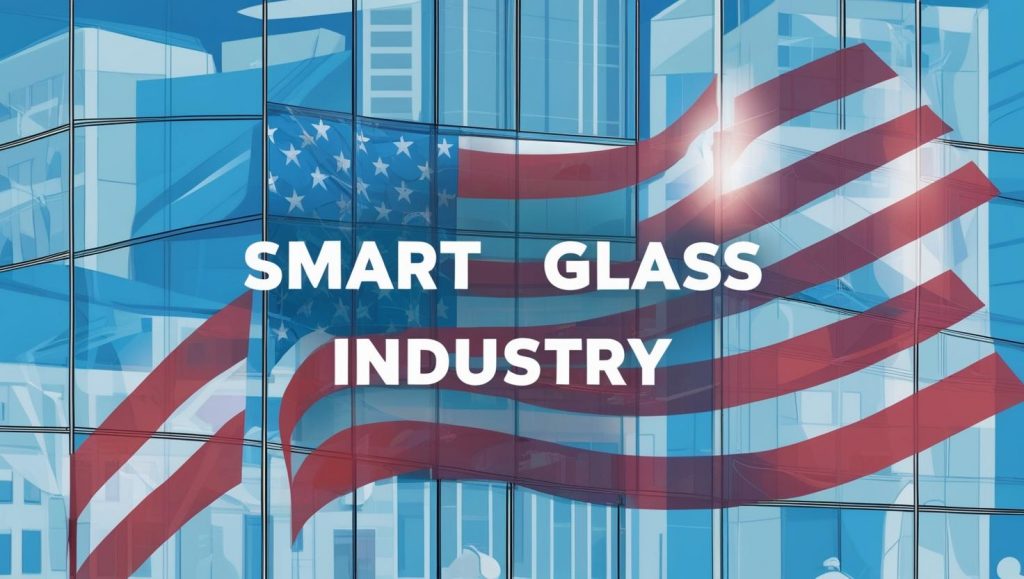The smart glass industry, a rapidly evolving sector at the intersection of technology and construction, has found itself navigating turbulent waters due to recent global trade policies. Among these, the Trump tariff impact on smart glass market stands out as a pivotal force, influencing everything from supply chains to pricing strategies.
Smart glass, often referred to as switchable glass or dynamic glass, represents a cutting-edge technology that allows users to control light and privacy through electronic means. Its applications span architectural windows, automotive displays, and even consumer electronics, making it a versatile material with growing demand. However, the Trump tariff impact on smart glass market introduces complexities that could either hinder growth or spur innovation, depending on how manufacturers, suppliers, and policymakers respond. With tariffs targeting imports from key manufacturing hubs like China, Canada, and Mexico, the cost dynamics of raw materials and finished smart glass products are shifting, prompting a reevaluation of production strategies and market approaches.
Overview of the Smart Glass Industry and the Role of Global Trade Policies in Shaping It
The smart glass industry has witnessed remarkable growth over the past decade, driven by advancements in nanotechnology, energy efficiency mandates, and rising consumer demand for sustainable building solutions. Unlike traditional glass, smart glass can alter its transparency or opacity in response to external stimuli like voltage, heat, or light, offering benefits such as energy savings, enhanced privacy, and aesthetic flexibility. This technology has found a foothold in diverse markets, from high-end residential and commercial buildings to the automotive sector, where it enhances driver comfort and vehicle efficiency.
At its core, the smart glass market is a global enterprise. Manufacturers in Asia, particularly China, dominate the production of raw materials and components essential to smart glass fabrication. Europe contributes cutting-edge research and development, while North America serves as a major consumer and innovator in application design. This interconnected supply chain underscores the vulnerability of the smart glass industry to disruptions in international trade. The Trump tariff impact on smart glass market emerges as a critical variable in this equation, as tariffs imposed on imports from key trading partners threaten to increase costs and alter market dynamics.
Global trade policies have long played a role in shaping industries like smart glass. Free trade agreements historically facilitated the flow of materials and technology across borders, enabling cost efficiencies and fostering innovation. However, the reintroduction of protectionist measures under the Trump administration marks a departure from this trend. By imposing tariffs—such as the 10% baseline on all imports and the steeper 25% on goods from Canada and Mexico—the administration aims to bolster domestic manufacturing and address trade imbalances. For the smart glass industry, this shift introduces both immediate challenges and potential long-term benefits, depending on how stakeholders adapt.
Request Trump Tariff Threat Assessment Analysis Now: https://www.marketsandmarkets.com/forms/ctaTariffImpact.asp?id=907
Key Takeaways from the Intersection of Trump Tariffs and the Smart Glass Sector
Analyzing the Trump tariff impact on smart glass market reveals several critical insights that stakeholders must consider as they navigate this evolving landscape. At the forefront is the immediate cost increase associated with imported materials. Tariffs on goods from China, a major supplier of smart glass components, could raise production expenses by 10% to 20%, depending on the specific tariff rate applied. This escalation affects not only manufacturers but also downstream industries like construction and automotive, where smart glass is increasingly integrated into designs.
Another key takeaway is the potential for supply chain reconfiguration. The Trump tariff impact on smart glass market may push companies to diversify their sourcing strategies, reducing dependence on tariff-affected regions like China and exploring alternatives in countries with more favorable trade terms. This shift, while resource-intensive, could enhance resilience against future trade disruptions. For instance, manufacturers might turn to domestic suppliers or invest in regional production hubs, aligning with the administration’s goal of revitalizing American industry.
The competitive dynamics within the smart glass market are also shifting due to these tariffs. Companies with robust domestic manufacturing capabilities may gain an edge, as they can sidestep import costs and appeal to buyers prioritizing “Made in America” products. Conversely, firms heavily reliant on international supply chains may face margin compression or loss of market share unless they adapt swiftly. The Trump tariff impact on smart glass market thus serves as a litmus test for agility and innovation, separating adaptable players from those tethered to outdated models.
Consumer behavior represents another critical dimension. As costs rise due to the Trump tariff impact on smart glass market, end-users—whether builders, automakers, or homeowners—may reconsider their adoption of smart glass technology. While the long-term benefits of energy efficiency and functionality remain compelling, higher upfront costs could slow market penetration, particularly in price-sensitive segments. This tension between cost and value underscores the need for strategic pricing and marketing adjustments to maintain demand.
Finally, the broader economic implications cannot be ignored. The Trump tariff impact on smart glass market intersects with concerns about inflation and economic growth. Economists warn that widespread tariffs could elevate consumer prices across industries, potentially dampening spending and investment. For smart glass, this macroeconomic backdrop adds another layer of complexity, as market growth hinges on sustained demand from construction and automotive sectors—both of which are sensitive to economic cycles.
Detailed Analysis of the Trump Tariff Impact on Smart Glass Market and Its Economic Ramifications
Delving into the specifics of the Trump tariff impact on smart glass market requires a closer examination of how these policies affect the industry’s cost structure, supply chain, and competitive landscape. At the heart of this issue is the tariff schedule itself. As of early 2025, the administration has implemented a 10% tariff on all imports, with additional levies of 25% on goods from Canada and Mexico and up to 54% on select Chinese products. For the smart glass industry, these rates directly target critical inputs like glass substrates, conductive films, and electronic controllers, many of which originate in these countries.
The cost implications are immediate and significant. Take, for example, indium tin oxide (ITO), a key material in smart glass production. China accounts for a substantial share of global ITO supply, and a 54% tariff on Chinese imports could drastically inflate costs for manufacturers reliant on this source. Similarly, Canada and Mexico supply glass components and automotive parts that incorporate smart glass, and the 25% tariff on these goods compounds the expense. The Trump tariff impact on smart glass market thus translates into higher production costs, which manufacturers must either absorb—sacrificing profit margins—or pass on to customers, risking demand erosion.
Supply chain disruptions amplify these challenges. The smart glass industry has historically benefited from a streamlined global supply chain, with raw materials flowing seamlessly from Asia, processing occurring in multiple regions, and final assembly often localized to demand centers. The Trump tariff impact on smart glass market threatens this efficiency by introducing financial penalties on cross-border trade. Manufacturers may face delays as they seek alternative suppliers or reconfigure logistics, adding time and expense to an already complex process. For instance, shifting away from Chinese ITO might require sourcing from less established markets like South Korea or Japan, where prices may be higher or capacity limited.
Opportunities and Challenges Arising from the Trump Tariff Impact on Smart Glass Market
The Trump tariff impact on smart glass market presents a dual-edged sword, offering both opportunities for growth and challenges that test the industry’s resilience. On the opportunity side, these tariffs could catalyze a wave of domestic investment and innovation. With imported components becoming costlier, U.S.-based manufacturers have a chance to capture market share by expanding production capacity and developing homegrown alternatives to foreign inputs. This aligns with the administration’s protectionist agenda, potentially attracting government support through subsidies or tax incentives for companies that bolster American manufacturing.
Another opportunity lies in supply chain diversification. The Trump tariff impact on smart glass market forces companies to rethink their reliance on single-source suppliers, particularly in tariff-heavy regions like China. By exploring new partnerships in countries with lower trade barriers—such as Vietnam, India, or even European nations—manufacturers can mitigate risks and build more resilient networks. This shift could also spur innovation, as firms collaborate with new suppliers to develop cost-effective materials or processes tailored to the smart glass industry’s needs.
The push for sustainability offers a further avenue for growth. As tariffs increase the cost of imported smart glass, domestic producers can emphasize the environmental benefits of local production, such as reduced shipping emissions. This narrative resonates with consumers and businesses prioritizing eco-friendly solutions, potentially boosting demand for American-made smart glass. The Trump tariff impact on smart glass market could thus serve as a catalyst for aligning economic and environmental goals, strengthening the industry’s value proposition in a competitive global landscape.
Solutions to Mitigate the Trump Tariff Impact on Smart Glass Market and Foster Industry Resilience
Addressing the Trump tariff impact on smart glass market requires a multifaceted approach that combines short-term mitigation with long-term strategic planning. One effective solution is investing in domestic manufacturing capacity. By establishing or expanding U.S.-based facilities, companies can bypass import tariffs, reduce shipping costs, and tap into growing demand for locally made products. This move requires upfront capital, but government incentives—such as those tied to infrastructure or clean energy initiatives—could offset the expense, making it a viable option for forward-thinking firms.
AQs
What is the Trump tariff impact on smart glass market?
The Trump tariff impact on smart glass market refers to the economic and operational effects of tariffs imposed by the Trump administration on imported goods, particularly those affecting the smart glass industry. These tariffs, including a 10% baseline on all imports and higher rates on goods from China, Canada, and Mexico, increase the cost of raw materials and components essential to smart glass production, influencing pricing, supply chains, and market dynamics.
How do Trump tariffs affect smart glass manufacturing costs?
Trump tariffs raise the cost of imported materials like indium tin oxide, glass substrates, and electronic controls, which are critical to smart glass manufacturing. Depending on the tariff rate—ranging from 10% to 54%—production expenses could rise significantly, forcing manufacturers to either absorb the costs, pass them on to consumers, or find alternative suppliers, each with its own economic implications.
What opportunities does the Trump tariff impact on smart glass market create?
The Trump tariff impact on smart glass market creates opportunities for domestic manufacturers to expand production, innovate with alternative materials, and diversify supply chains. It also encourages a focus on sustainability and local sourcing, potentially attracting government support and appealing to eco-conscious consumers, which could drive long-term growth.
What challenges does the smart glass industry face due to Trump tariffs?
Challenges include higher production costs, supply chain disruptions, and potential declines in demand if prices rise beyond market tolerance. The Trump tariff impact on smart glass market particularly affects smaller firms reliant on imports, risking market consolidation and reduced competitiveness unless they adapt quickly to the new trade environment.
How can the smart glass industry mitigate the Trump tariff impact?
Mitigation strategies include investing in domestic production, developing cost-effective material substitutes, diversifying supply chains to tariff-friendly regions, and adjusting pricing and marketing to maintain affordability and demand. Collaboration across the industry can also secure policy support, helping to offset the Trump tariff impact on smart glass market and foster resilience.


